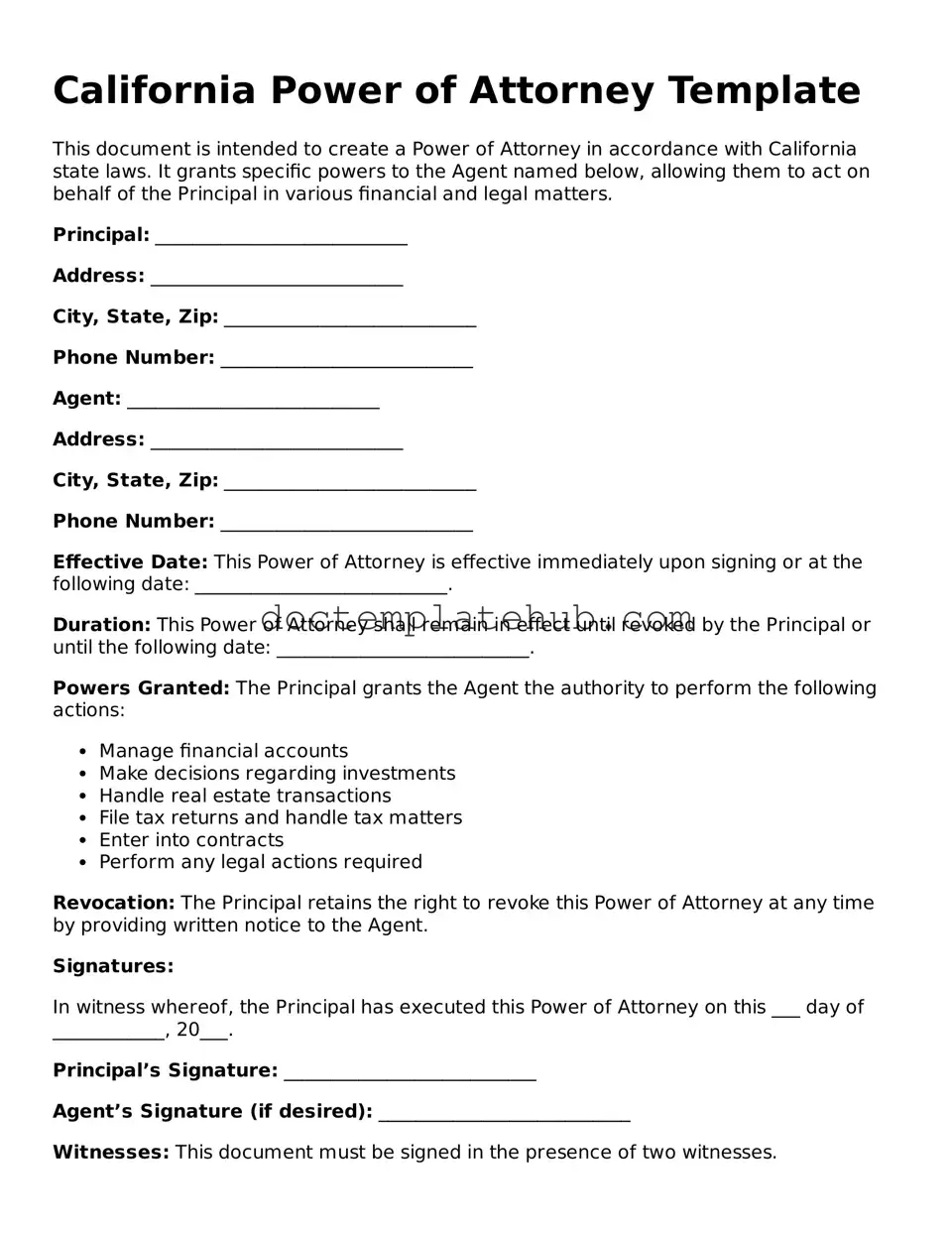What is a Power of Attorney in California?
A Power of Attorney (POA) in California is a legal document that allows you to appoint someone else to make decisions on your behalf. This can include financial matters, medical decisions, or other personal affairs. The person you appoint is known as your agent or attorney-in-fact. It's essential to choose someone you trust, as they will have significant authority to act in your name.
What types of Power of Attorney are available in California?
California offers several types of Power of Attorney forms, each serving different purposes. The most common types include General Power of Attorney, which grants broad powers to your agent, and Durable Power of Attorney, which remains effective even if you become incapacitated. There is also a Medical Power of Attorney, specifically for healthcare decisions, and a Limited Power of Attorney, which restricts your agent's authority to specific tasks or situations.
How do I create a Power of Attorney in California?
To create a Power of Attorney in California, you must complete the appropriate form, which can be obtained online or from legal offices. It's crucial to ensure the form is signed and dated by you, the principal. Additionally, your signature must be witnessed by at least one person or notarized to be legally valid. Once completed, keep a copy for your records and provide copies to your agent and any relevant institutions.
Can I revoke a Power of Attorney in California?
Yes, you can revoke a Power of Attorney at any time as long as you are mentally competent. To do this, you should create a written revocation document and notify your agent and any institutions that may have relied on the original Power of Attorney. It's advisable to also destroy any copies of the original document to prevent confusion. Always keep a record of the revocation for your files.
